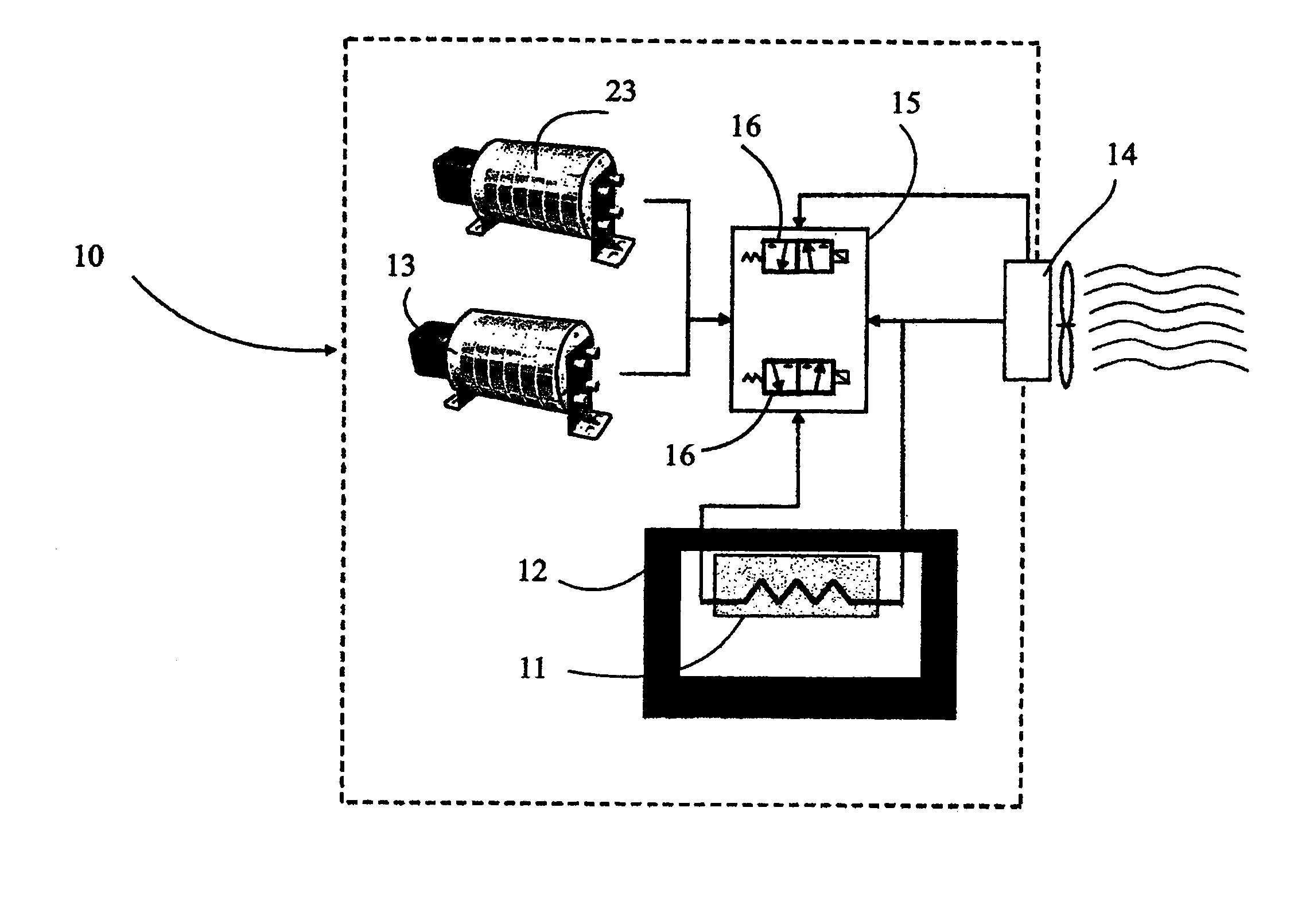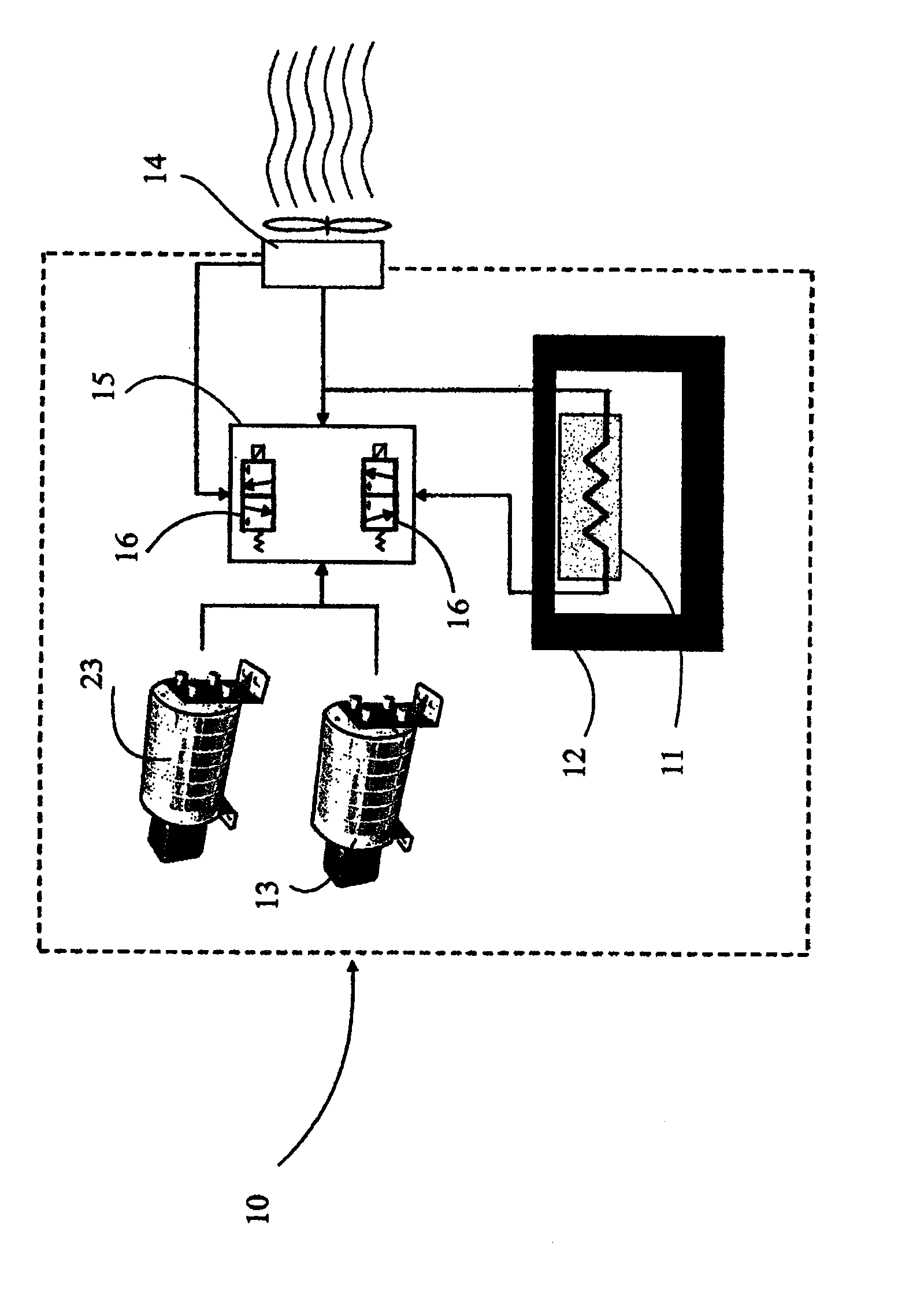Method and device providing the temperature regulation of a rechargeable electrical energy storage battery
- Summary
- Abstract
- Description
- Claims
- Application Information
AI Technical Summary
Benefits of technology
Problems solved by technology
Method used
Image
Examples
Embodiment Construction
[0024]The method of the invention is based on the magnetocaloric heat pump technology, the main advantages of which are its great energy efficiency, its low electric energy consumption, an environmentally and atmospherically friendly mode of operation, and the absence of gas.
[0025]The process consists of performing an integrated thermal control, called thermostatting, of the battery, with a high energy efficiency and low consumption, environmentally friendly, in order to achieve an accurate, autonomous and continuous or permanent thermal control of the battery or group of batteries, whether the battery or group of batteries is active or passive. The process has the double function of balancing the heat exchanges with the outside environment at very low energy cost, and of dissipating the internal heat inputs of the battery in service, when the vehicle is used and when the battery is recharging. This balancing of heat exchanges and evacuation of excess internal heat inputs are prefer...
PUM
 Login to View More
Login to View More Abstract
Description
Claims
Application Information
 Login to View More
Login to View More - R&D
- Intellectual Property
- Life Sciences
- Materials
- Tech Scout
- Unparalleled Data Quality
- Higher Quality Content
- 60% Fewer Hallucinations
Browse by: Latest US Patents, China's latest patents, Technical Efficacy Thesaurus, Application Domain, Technology Topic, Popular Technical Reports.
© 2025 PatSnap. All rights reserved.Legal|Privacy policy|Modern Slavery Act Transparency Statement|Sitemap|About US| Contact US: help@patsnap.com


